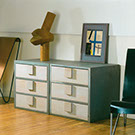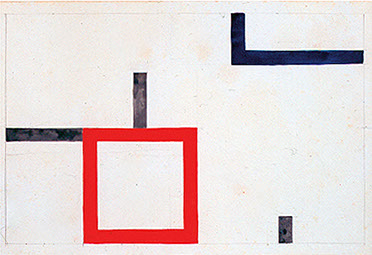
sophie taeuber
In december 1915, I met in Zurich Sophie Taeuber
who had freed herself of conventional art.
Starting already in 1915, Sophie Taeuber divides
the surface of her water paintings into squares
and rectangles which she juxtapposes in a horizontal
and perpendicular fashion. She builds them as a piece of masonry work. The colours are luminous, going from
the most crude yellow to a deep red or blue. In some
of her compositions, she introduces, at different planes, stocky and massive figures which ar reminiscent of those which she would later shape into turned wood.
Jean Arp, Jours effeuillés
biography
1889
Sophie Taeuber was born on January 19th, in Davos-Platz in Switzerland. Her father, a pharmacist, dies
in 1891. Her mother, open to the arts and to the society of her time, then decides to move to the canton
of Appenzell.
1907-1913
Sophie undertakes studies at the Saint Gall Applied
Arts school in 1907. She attends the Lehr-und Versuchs- Ateliers für angewandte und freie Kunst (Learning and Experimenting Workshops for the Liberal and Applied Arts) in Munich in 1910, and she joins
in 1912 the Hamburg Applied Arts School.
The versatile vocational training she receives
in these progressive schools which are sensitive
to the contemporary currents will be having a major impact on the orientation of her career.
1914
At the end of her studies, she settles down in Zurich, paints portraits and still lives, produces artifacts (candlesticks, scarves, toys...). But from the following year on, she renounces figurative subjects and makes
a solitary breakthrough toward abstraction, in parallel
to the movements that spring up in Russia (Malevitch), in the Netherlands (De Stijl group with Doesburg, Mondrian and Rietveld) and in Germany (Johanes Itten). The vertical-horizontal compositions which she starts painting during this period impress greatly Jean Arp, whom she met in 1915.
1916
Sophie is appointed professor at the Applied art school in Zurich, of which she runs the textile department.
But the years of war are most of all marked by its active participation in the Dada movement. She attends
the “Cabaret Voltaire”, the movement’s birth place,
and makes friends with Hugo Ball and von Laban’s dancers, in particular with Mary Wigmann.
She cooperates in the production of choreographies, produces costumes and takes part in dance shows.
It’s at that time that she is the guest of the C.G. Jung circle in Zurich, that she discovers the works of the art historian Wilhelm Worringer ans makes friends
with the architect Adolf Loos.
1918
Arp and Sophie Taeuber adheres to the group
Das Neue Leben (The New Life) founded
by Marcel Janco and by Fritz Baumann, whose objective is to integrate abstract art into daily life. It’s during
this same year that she produces her first
"Têtes Dada" (Dada heads), as well as the persona puppets of the satarical story entitled "The King-stag", adapted from Carlo Gozzi and integrating openly Dada and psychoanalysis. These abstract puppets represent her most original contribution to the Dada movement. Between 1916 and 1918, Arp and Sophie Taeuber produce together orthogonal paintings and textiles,
as well as turned wood sculptures-containers.
1920
Sophie Taeuber exhibits with Das Neue Leben
in Kunsthalle Bern and Basel and at the Decorative Arts Museum in Zurich. It’s the period of the "Rythmes libres" (Free Rythms) and "Taches quadrangulaires"
(Quadrangular Stains). During the twenties,
she undertakes numerous trips, to Florence, to Siena, which inspire her the "Paysages de Sienne" (Siena landscapes) series.
In St Moritz, she produces in 1921 the furniture
of the "Suhaglia" villa for her theosoph friends
Aor et Ischa Schwaller.
1922
It’s in secret that, ion October 20th, she marries
Jean Arp in Pura in the Ticino districts. The trips follow each other (the isle of Rügen, in the Baltic sea, again
in Italy, Paris, the Ticino destrict).
1925
She settles down with Arp in Paris, villa des Fusains,
in Montmartre, in the vicinity of Max Ernst, Joan Mirò, Paul Eluard, Magritte, Tristan Tzara. It’s the time
of the "Compositions figuratives géométriques"
(Geométric figurative compositions).
1926
Alongside their activities in Paris and Zurich, the couple regularly stayed in Strasbourg, where they had to reside in order to obtain French nationality (Sophie Taeuber-Arp, Jean Arp and his brother François were naturalised French citizens on 20 July 1926). That same year, the couple received the commission for the renovation of the Aubette in Strasbourg. They undertook the project with the help of Theo van Doesburg. The three artists produced a collective work without equivalent in 20th century art, which had disappeared a few years later and which to-day, is partially restored. Again in 1926, Sophie Taeuber had been entrusted with the decoration
of the André Horn’s appartment (meanwhile destroyed) and that of the Heimendinger house, still in Strasburg.
1927
With the fees received in Strasburg, the Arp couple buys in 1927 a plot of land in Clamart-Meudon, where
they will build an studio house, of which Sophie Taeuber designs entirely the plans. At the same time,
she produces the "Compositions concrètes" (Concrete compositions) and the "Abstractions constructives"
(Constructive abstractions). With Blanche Gauchat,
she publishes a teaching guide for textile drawing.
1930
The beginning of the thirties, marked by the advent
of surrealism, is the time of the involvement
in the groups which defend abstraction. In 1930, Sophie becomes a member of "Cercle et Carré" (Circle
and Square), founded by Michel Seuphor
and Joaquín Torres García, and exhibits with
the members of the group. "Compositions statiques"
(Static Compositions) period. The danse rythm is all-present in Sophie Taeuber’s visual creation.
1931
After an exhibition at the Lodz Museum in Poland, Sophie Taeuber donates two paintings and a gouache
to the museum, which are the first entry of her works into a public collection.
This same year, Sophie participates with Auguste Herbin and Georges Vantongerloo in the creation of
a new grouping : Abstraction-Création. " Compositions dynamiques" (Dynamique compositions) time, "Espaces multiples" (Multiple spaces), "Formes irrationnelles"
(Irrational Shapes), of which she eliminates
the geometrical rigour, by using no longer anything
but the circle.
In the mid-1930s, Sophie Taeuber and Arp are increasingly supported by Swiss collectors who buy works from them, including Annie and Oskar Müller-Widmann, for whom Sophie designs a house project
in Basel in 1932 (not realized).
1934
Taeuber presents her latest ideas in a collective exhibition at the Galerie des Cahiers d'Art in Paris.
Her work is particularly noticed by Jan Brzekowski.
1937
Sophie achieves international fame thanks
to Georg Schmidt’s "Constructivistes" exhibition
at the Kunstmuseum in Basel where she exhibits
twenty-four works. She associates with the swiss group "Allianz", founded around Max Bill and Leo Leuppi.
Sophie Taeuber runs a new international contemporary art magazine, «Plastique/Plastic», created
by César Domela. The magazine, which was discontinued in 1939, is a link between European
and American art.
Period that saw the production of "Compositions dans un cercle" (Composition in a circle), of the first reliefs,
of turned wood sculptures, of new "Duo" drawings
by Arp, of "Lignes d'été" (Summer lines).
1939
In a more and more unbearable climate for progressive artists, Jeanne Bucher dedicates an exhibition
in her gallery to the Taeuber-Arp couple. In 1940,
both artists leave their house in Clamart-Meudon
and end up finding themselves in the South, near Grasse, in the Magnelli couple’s house, where they will later be joined by Sonia Delaunay, after the death
of her husband. With Arp, Magnelli and Sonia Delaunay, she produces a series of lithographies with two, three
or four colours, which will be published in an album
in 1950.
1942-1943
She gets back to Switzerland with Jean Arp, hoping
to emigrate more easily to the United States, where
she now counts fervent admirors.
She dies by accident, in Max Bill’s house, on January 12th, at the age of 54, asphyxiated by emanations
from a coal stove.
Her last series of works – about thirty Indian ink and pencil drawings – are great intensity variations around
a circle.
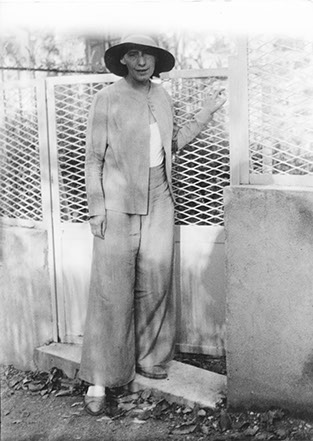
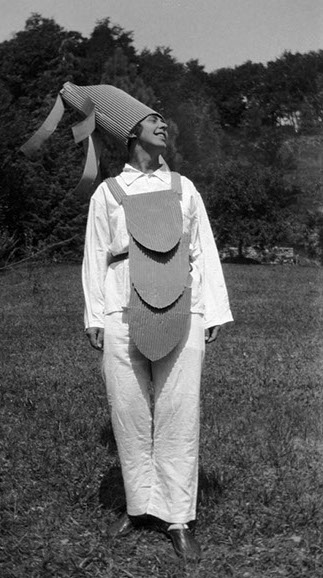
sophie taeuber, Ascona,1925
© Fondation Arp, Clamart
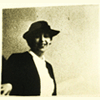
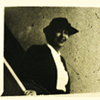
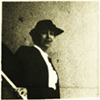
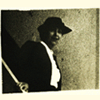



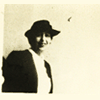
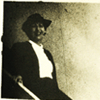
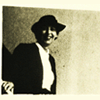







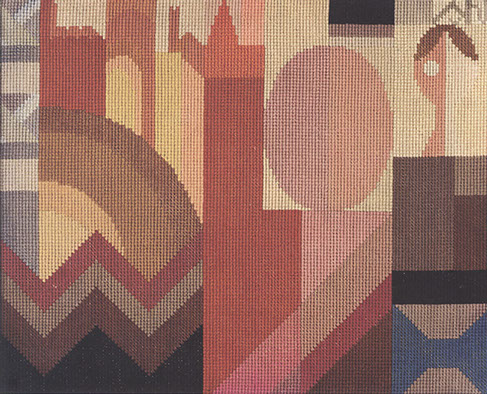





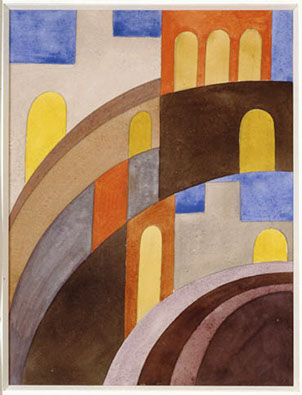




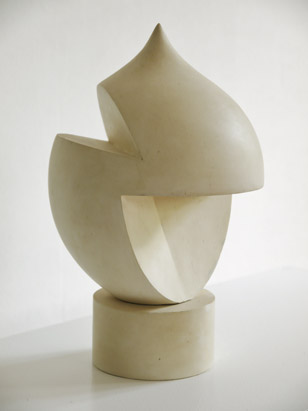

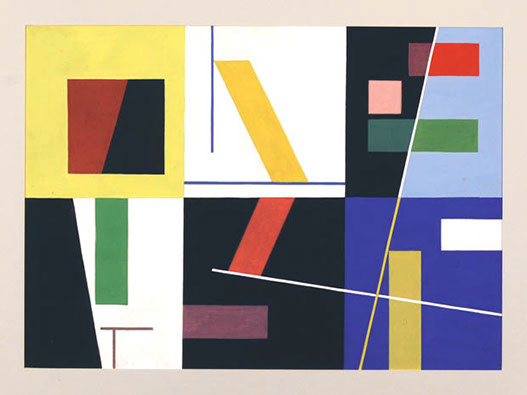



.jpg?crc=24219990)

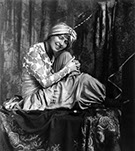
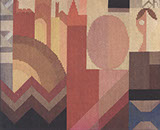
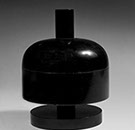
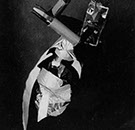
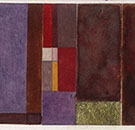
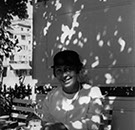
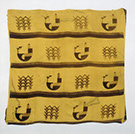
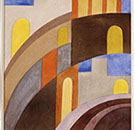
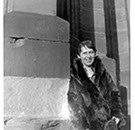
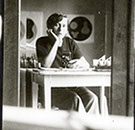
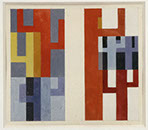
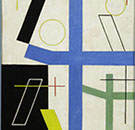
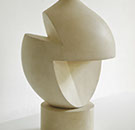
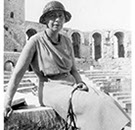
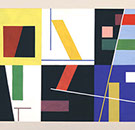
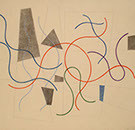
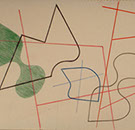
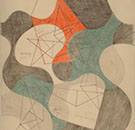
-crop-u220145.jpg?crc=4021049894)
